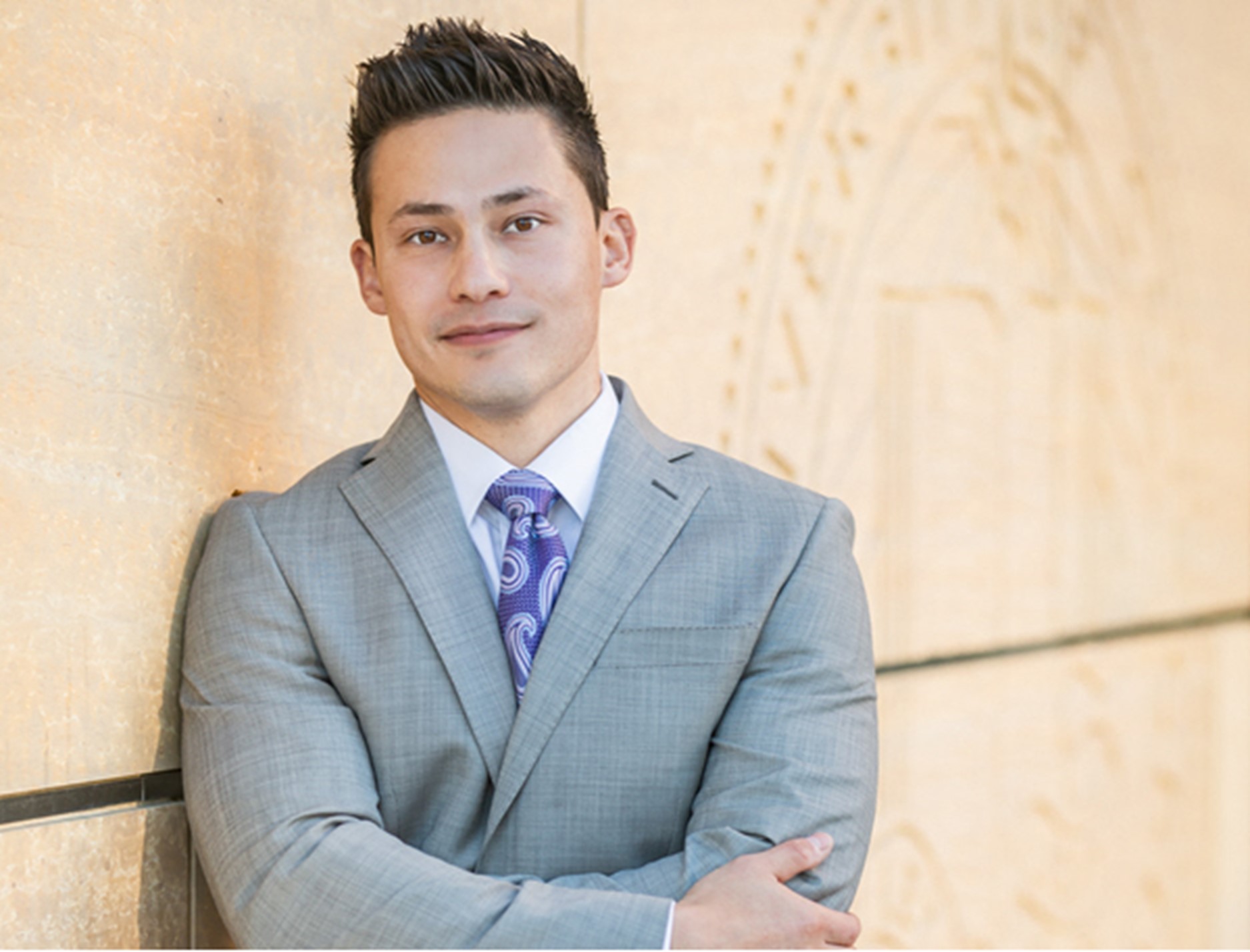
NEWPORT BEACH, CA / ACCESSWIRE / January 4, 2024 / A tummy tuck, also known as abdominoplasty, is a cosmetic surgery procedure focused on enhancing the appearance of the abdomen by removing excess skin and fat, and tightening the muscles of the abdominal wall. This body contouring surgery can be particularly beneficial for those who have undergone significant weight changes, pregnancy, or aging, which often leads to sagging abdominal tissues that cannot be corrected through diet and exercise alone. Setting realistic expectations prior to undergoing a tummy tuck is crucial for patient satisfaction as the outcome varies based on individual body types and conditions. Although a higher percentage of women opt for this procedure, a growing number of men are having tummy tucks to eliminate excess skin from extreme weight loss.

A tummy tuck helps to reshape and firm up the abdominal area. Image Credit: Kegfire / 123RF.
"Tummy tucks can differ greatly, from less invasive mini-tucks to more extensive surgeries, tailored to the patient's specific needs. With the complex nature of this procedure, there are several important questions potential candidates should consider. Both our female and male patients have experienced transformative results with tummy tucks, often expressing tremendous satisfaction with their outcomes," said Dr. Brandon Richland, MD.
Dr. Richland is a well-known and respected Board-Certified Plastic Surgeon in Newport Beach Orange County / Southern California that specializes in cosmetic and reconstructive surgeries. He is dedicated to helping both women and men look and feel their absolute best.
Here are the Top 10 Tummy Tuck Plastic Surgery Questions Women Are Seeking Answers to, Before They Chose a Board-Certified Plastic Surgeon:
- What is a Tummy Tuck?
- How Much is a Tummy Tuck?
- How Long to Recover From a Tummy Tuck?
- How to Get Rid of Seroma After Tummy Tuck?
- How Painful is a Tummy Tuck?
- How Long Does a Tummy Tuck Take?
- How to Sleep After aTummy Tuck?
- What is an Extended Tummy Tuck?
- How Long After a Tummy Tuck Can You Have Sex?
- How to Reduce Drainage After a Tummy Tuck?
1. What is a Tummy Tuck?
A tummy tuck, or abdominoplasty, is a surgical procedure aimed at creating a flatter and firmer abdomen. The surgery involves the removal of excess skin and fat from the abdominal region and typically includes the tightening of the abdominal muscles. The goal is to reshape and firm the abdominal profile that may have been affected by weight fluctuations, pregnancy, or aging.
During the procedure, a plastic surgeon makes an incision near the pubic hairline which may extend to the hips, depending on the amount of skin that requires removal. Through this incision, the surgeon can target excess fat and skin, and repair separated muscles. This process helps in defining the waistline and improving overall body contour.
Patients are placed under anesthesia during a tummy tuck to ensure comfort and safety. Post-surgery, individuals can expect to have a scar, usually situated below the bikini line to minimize visibility. The size and visibility of the scar vary according to the technique used and the extent of the surgery.
For individuals with less pronounced excess skin or fat, a mini tummy tuck surgery might be recommended, which involves a smaller incision and focuses on the lower abdomen. Alternatively, those who have lost a significant amount of weight and possess considerable amounts of skin may opt for a fleur de lis abdominoplasty, which addresses skin removal in both a vertical and horizontal pattern for a more comprehensive result.
2. How Much is a Tummy Tuck?
The cost of a tummy tuck, or abdominoplasty, can vary significantly based on several factors. On average, the procedure may exceed $6,000 in the United States, but this baseline figure often excludes additional expenses.
Specific cost considerations include the surgeon's fees, which are influenced by their experience and the geographic location of their practice. Hospital and surgical facility costs add to the total, covering the space and equipment required for the operation. Furthermore, the complexity of the surgery itself might impact the price, with more intricate procedures necessitating greater resources.
Medications for post-operative care, such as pain relief and antibiotics, contribute to the overall cost as well. Patients should account for these post-surgery expenses when considering the procedure.
When it comes to insurance coverage, most insurers do not cover cosmetic surgery; however, if the tummy tuck is deemed medically necessary, some reimbursements may be possible. Exploring whether a tummy tuck is essential for health improvement is crucial and discussing this with the insurer could potentially lead to partial cost recovery.
Finally, any quotes provided should be thoroughly reviewed to ensure they cover all facets of the surgery, from the initial consultation to the final follow-up. Patients are encouraged to conduct extensive research and consult with a qualified surgeon to obtain a detailed and personalized cost breakdown.
3. How Long to Recover From a Tummy Tuck?
Recovering from a tummy tuck varies between individuals, but typically it spans from a few weeks to several months.
Initial Recovery Phase: In the first few weeks, patients are generally advised to rest and limit movement to ensure optimal healing. It's crucial to avoid strenuous exercise and heavy lifting during this period. The body's energy is focused on healing, and rest is a key component of the recovery process.
Activities and Exercise: Resuming normal activities, including a safe return to fitness, should be gradual. Approximately 3 to 4 weeks post-surgery, patients can start light exercises with their doctor's consent. However, it's important to ease into any physical routine and listen to one's body to prevent any complications.
Lifestyle Considerations: Diet plays a significant role in recovery. A nutritious diet can aid the healing process, while smoking can impede it and should be avoided. Patients should also ensure they follow their surgeon's specific guidance on diet, exercise, and wound care.
Long-Term Healing: The healing process continues for months after the surgery. Although patients may feel better and see noticeable changes within weeks, full recovery and the final results might take several months to become apparent.
For those considering how they can get back to their fitness routines, understanding the appropriate timeline for exercise after a tummy tuck is critical. Consulting with healthcare providers for personalized advice is always recommended.
4. How to Get Rid of Seroma After Tummy Tuck?
A seroma is a collection of fluid that builds up under the skin after surgery. Post-tummy tuck, it's a common occurrence that can lead to swelling and discomfort. Here are some steps that can be taken to address a seroma following the procedure:
- Follow Surgeon's Instructions: Adherence to the plastic surgeon's post-operative advice is crucial, as they will provide guidance on how to minimize the risk of seroma development.
- Drainage Tubes: These are often placed by the surgeon to help remove excess fluid. It's essential to care for these tubes properly and monitor the amount of fluid being drained.
- Compression Garments: Wearing recommended compression garments can help reduce the risk of serum accumulation.
- Minimize Activity: Limiting movement and avoiding strenuous activities help prevent the accumulation of fluid.
- Regular Follow-Up Appointments: Attend all follow-up visits so the surgeon can monitor the healing process and promptly address any signs of seroma.
If an infection is suspected due to increased pain, redness, or fever, contact the plastic surgeon immediately. In cases where seroma persists, the surgeon might need to perform an aspiration to remove the fluid. Remember, each individual's recovery is unique, and following professional medical advice closely is imperative for a safe and effective healing process.

Image Credit: Melnyk58 / 123RF.
5. How Painful is a Tummy Tuck?
A tummy tuck, also known as abdominoplasty, involves discomfort and pain during the recovery process. Patients typically receive general anesthesia during the surgery, which means they're asleep and won't feel pain during the procedure itself.
Post-surgery, patients can expect to experience pain, particularly in the first few days. The intensity of pain varies among individuals but is generally described as moderate to severe. Surgeons often prescribe pain medication to manage discomfort during the early stages of recovery. These may include prescription painkillers or over-the-counter medicines like ibuprofen or acetaminophen.
During the recovery period, which can take several weeks, the pain should gradually reduce. It's important for patients to follow their surgeon's recovery plan, which includes guidance on activity levels and how to look after the incision site. Proper care can aid in reducing pain levels and promote healing.
- Immediate Post-Op: Patients will spend a few hours in a recovery room as anesthesia wears off. Pain can be significant but is managed with medications.
- First Week: Pain is managed at home with prescribed medications. Patients are usually advised to limit physical activity to promote healing.
- Weeks 2 to 6: Discomfort decreases and patients might switch to over-the-counter pain relief. Light activities can be slowly reintroduced.
Abdominoplasty's pain levels are subjective and can be influenced by the patient's pain tolerance, the extent of the surgery, and adherence to post-operative care instructions. Consulting with a board-certified surgeon, who can outline what to expect from the surgery, is crucial for patients to prepare for a tummy tuck and its recovery process.
6. How Long Does a Tummy Tuck Take?
The duration of a tummy tuck, also known as an abdominoplasty, varies depending on several factors. Generally, the surgical procedure lasts between two to five hours. The complexity of the surgery and the extent of the correction needed can extend or shorten this time frame.
Preparation and Anesthesia: Before the surgery begins, patients will undergo preparation, which includes administering anesthesia. This stage can take about an hour, ensuring the patient's comfort and safety during the procedure.
During Surgery: The core phase of a tummy tuck involves:
- Incision: The surgeon makes a horizontal incision between the pubic hairline and the belly button.
- Repairing Muscle and Tissue: The surgeon may stitch weakened or separated muscles to create a firmer abdomen.
- Removing Excess Skin: Excess skin is removed to create a smoother profile.
- Closing the Incision: The skin is drawn down, and a new opening for the belly button is created.
Each step takes a certain amount of time, depending on the patient's specific needs.
Post-Surgery: After the procedure, there is a recovery period where the patient is closely monitored. This usually lasts for a few hours before the patient is cleared to return home, with the total time at the clinic or hospital often extending beyond the surgery itself.
7. How to Sleep After a Tummy Tuck?
After a tummy tuck, patients may find sleeping comfortably to be a challenge. Proper rest is crucial for recovery and healing, so it's important to follow guidelines to get the quality sleep necessary.
Positioning: A person should sleep in a semi-reclined position. This can be achieved by propping up the head and upper back with pillows, creating an angle of about 45 degrees. It's beneficial to also place a pillow under the knees to reduce stress on the abdominal area.
- Using a Recliner: A recliner can be an excellent sleeping option for those who have difficulty finding a comfortable position in bed.
- Avoiding Certain Sleeping Positions: Sleeping on the stomach or flat on the back should be avoided during the early recovery phase, as these positions can place undue strain on the surgery site.
Movement and Support: Carefully moving in and out of bed is essential. They should use their arms to support themselves and avoid engaging the abdominal muscles excessively. Additionally, wearing an abdominal binder, as recommended by a healthcare provider, can offer extra support while sleeping and promote healing.
Scheduled Rest: It's advisable to maintain a regular sleep schedule. Going to bed and waking up at the same time each day can help regulate sleep patterns and improve rest quality.
Limiting Stimulants: Steering clear of caffeine and electronic devices before bedtime can help a person fall asleep quicker and experience deeper sleep.
Implementing these sleeping tips can enhance comfort during the recovery period after a tummy tuck. Patients should always consult with their surgeon for personalized advice.
8. What is an Extended Tummy Tuck?
An extended tummy tuck goes beyond the traditional tummy tuck procedure. It is designed for individuals with an excessive amount of excess skin and fat around the abdomen that extends around the hips to the lower back. This more comprehensive procedure includes aspects of liposuction, but it targets a larger area to enhance the body contour further.
The process of an extended tummy tuck similarly involves the tightening of the abdominal muscles, much like a standard tummy tuck. However, it distinctly focuses on a broader region of the body. Patients often seek this more extensive procedure after significant weight loss or multiple pregnancies where the skin and tissue have been excessively stretched.
Candidates for an extended tummy tuck should be in good overall health, close to their ideal body weight, and have realistic expectations about the potential scars and recovery process. It's advisable to consult a board-certified plastic surgeon to discuss the individual's situation, the specific outcomes they can hope to achieve, and the tailored approach that will best suit their needs.

Image Credit: Milkos / 123RF.
9. How Long After a Tummy Tuck Can You Have Sex?
After a tummy tuck, patients are generally advised to wait before resuming sexual activity. The recovery time can vary based on individual healing processes and the complexity of the surgery. Typically, surgeons recommend that patients abstain from sex for at least 2 to 4 weeks following the operation.
- Weeks 1-2: It is crucial to avoid any form of vigorous activity, including sex, as the body is in its initial healing phase.
- Weeks 3-4: Some may start to feel better, but it is important to limit movements and listen to the body's signals.
- Week 4 onwards: Intimacy can be gradually reintroduced, provided there is no discomfort and with the surgeon's approval.
Additionally, patients should be mindful of the following:
- Exercise: Physical exertion should be limited during the early recovery stages. Reengaging in exercise should be done progressively and with professional guidance.
- Intimacy: Intimacy can include a range of activities. It's advisable to start with less physically demanding actions and gradually move towards more strenuous activities.
- Stretch Marks: For those concerned about stretch marks, it's essential to allow the skin to heal properly and maintain the results of the surgery.
Ultimately, communicating with one's surgeon is the best way to determine the appropriate time to resume sexual activity. They can provide personalized advice based on how well the incision is healing and any other individual factors related to recovery.
10. How to Reduce Drainage After a Tummy Tuck?
Postoperative care is crucial for minimizing drainage and promoting wound healing after a tummy tuck. Patients can take several measures to ensure a smoother recovery process.
Follow the Surgeon's Instructions: One of the most important steps is to strictly adhere to the plastic surgeon's directions. Surgeons provide tailored advice depending on the specifics of each patient's procedure.
Use of Drains: Drains are often placed to remove excess fluid and reduce swelling. Patients should monitor the output and report any sudden changes. It's important to maintain the drains as instructed and keep them clean to prevent infections.
Use of Compression Garments: Wearing compression garments helps diminish swelling and supports the affected area. Ensure that the fit is snug but not overly tight to avoid impairing circulation.
Diet and Hydration: A balanced diet rich in proteins, vitamins, and minerals aids in tissue repair and wound healing. Staying hydrated is equally important, but excess salt should be avoided as it can exacerbate swelling.
Smoking and Alcohol: Refraining from smoking and limiting alcohol intake can significantly improve recovery. Both can impair healing and lead to complications.
Prompt Medical Attention: If any signs of infection or unusual symptoms occur, contacting the plastic surgeon promptly is imperative for timely intervention.
By diligently following these guidelines, patients can help reduce drainage and support their recovery, making their tummy tuck experience as smooth as possible.
Tummy Tuck Surgery: The Solution to a Flatter and Toned Abdomen
It involves the removal of excess skin and fat and the restoration of weakened or separated muscles to create a smoother and firmer abdominal profile. The results of a tummy tuck can significantly enhance one's body contour and are generally long-lasting, provided that a stable weight is maintained.
However, it's important to note that the outcome of a tummy tuck is not entirely permanent; aging and significant fluctuations in weight can affect the results. Additionally, it's often recommended for patients who have gone through pregnancy or extreme weight loss to consider this procedure. A mommy makeover might include a tummy tuck as part of a comprehensive approach to restore a woman's body after childbirth.
Patients interested in a tummy tuck should thoroughly discuss the potential outcomes, risks, and post-operative care with a certified plastic surgeon. Recovery times vary, but following the surgeon's guidance is essential for achieving the best results and minimizing any complications.
Choosing a tummy tuck is a significant decision and should be considered only after consultation with a qualified surgeon. Prospective patients might be interested in techniques such as the hidden scar tummy tuck for a more discreet post-operative scar. No matter the variation, this surgery can be an effective step towards a renewed physical appearance and enhanced self-esteem.

An experienced board-certified plastic surgeon like Dr. Brandon Richland, MD (pictured above) is the best option for achieving transformational results. Image Credit: RichlandMD.com
About Dr. Brandon Richland, MD:
Dr. Brandon Richland, MD is a respected Board Certified Licensed Plastic Surgeon in Orange County / Southern California specializing in cosmetic and reconstructive surgeries. Driven by his passion for medicine, Dr. Richland obtained his Doctor of Medicine (M.D.) degree from the prestigious program at Saint Louis University (SLU) School of Medicine in 2013. His exceptional skills were recognized when he received the McGraw Hill / Lange Medical Student Academic Achievement Award, and graduated top of his class with Honors. For his undergraduate degree, he attended University of California, Los Angeles (UCLA) and graduated with Honors in 2009.
To further enhance his surgical expertise, Dr. Richland completed his Residency in Plastic Surgery at the University of California, Irvine (UCI) from 2013 to 2019 earning the Academic Achievement Award twice during this period. A total of 14 years in dedicated schooling and medical residency. Dr. Richland is actively involved with healthcare and medical societies, as a Diplomate of the American Board of Plastic Surgery, a member of the American Society of Plastic Surgeons, American Society of Aesthetic Plastic Surgeons, and the California Society of Plastic Surgeons.
Located in one of these Orange County (OC) / Southern California cities?
Aliso Viejo, Anaheim, Brea, Buena Park, Costa Mesa, Coto de Caza, Cypress, Dana Point, Fountain Valley, Fullerton, Garden Grove, Huntington Beach, Irvine, La Habra, La Palma, Laguna Beach, Laguna Hills, Laguna Niguel, Laguna Woods, Ladera Ranch, Lake Forest, Los Alamitos, Mission Viejo, Newport Beach, Orange, Placentia, Rancho Santa Margarita, San Clemente, San Juan Capistrano, Santa Ana, Seal Beach, Stanton, Tustin, Villa Park, Westminster, or Yorba Linda?
Plastic Surgeon Dr. Brandon Richland, MD and his Cosmetic Aesthetics Team are ready to help you look and feel your absolute best. Elevate your confidence and self esteem levels to unfathomable new heights. A warm and engaging Team of carefully selected Aesthetics Professionals will make you feel calm, cool, collected, and right at home throughout your entire consultation and surgery process.
Schedule your in-person consultation in our modern and luxurious offices in either Fountain Valley, CA (Main HQ) or our Newport Beach, CA office. Live outside of Southern California or short on time? For your convenience, Virtual Consultations are also available.
CONTACT:
Dr. Brandon Richland, MD Inc.
Summer Mariorenzi
Media Relations
714-241-0646
summer@richlandmd.com
For Your Personalized First-Class Cosmetic and Aesthetics Experience, Schedule Your In-Person or Virtual Consultation:
https://www.richlandmd.com/contact-us/
Medical Disclaimer: The information shared is intended for informational purposes only and should not be construed as medical advice. Every individual and patient is different. Before considering any treatments or surgical procedures, be sure to consult with an experienced licensed healthcare provider to discuss the appropriateness and safety of any procedures or treatments based on your individual health and medical history.
SOURCE: Dr. Brandon Richland, MD
View the original press release on accesswire.com

